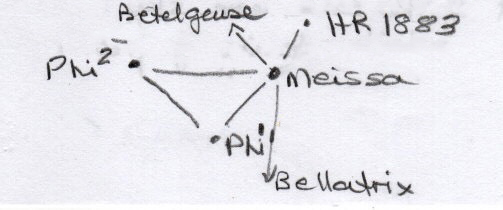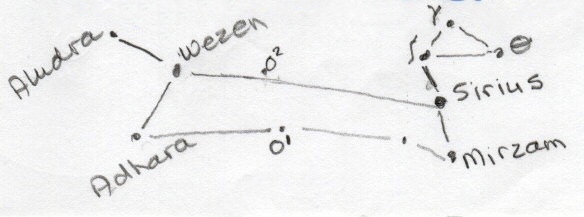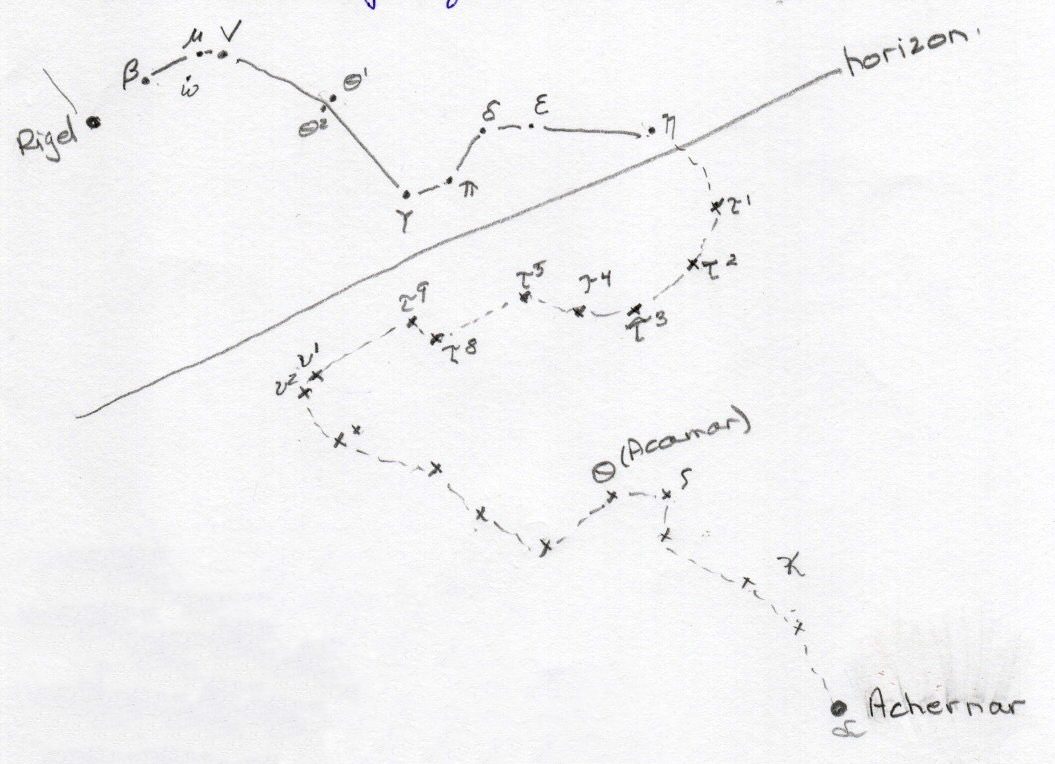Constellations: Canis Major, Gemini, Lepus, Eridanus
Satellite: ISS
Planet: Mars
Clusters: Melotte 111
Messier Objects: M35, M42, M44, M67
Stars: Meissa, φ1 Orionis, φ2 Orionis, HR1883
Zodiacal Light
Identified & Not entered into Logbook or database:
Constellations: Auriga, Big Dipper, Cassiopeia, Comma Berenices, Corvus, Leo, Orion, Orion Nebula, Perseus, Taurus
Asterism: Winter Circle
Clusters: Hyades, Pleaides
Messier Objects: M31
Location: Home of Bruce & Melody Hamilton, Litchfield, NS
Date: 2019-03-25/26
Time: 6:40 PM - 1:15 AM AST
Equipment: Visual + Binoculars, 10x42 IS
Transparency: Very Good (4)
Seeing: Very Good (4)
Temperature: 0º C - 1º C
SQM: 19.25
Jerry and I were invited to the Hamilton home for an overnight observing session. Given their clear skies and incredible horizon, we accepted their invitation.
Zodiacal Light
We watched the Sun set and saw the Zodiacal Light (ZL) rise on the western horizon. Beautiful! In the Atacama, Mars was centred in the base of the ZL but in Litchfield it was east of the ZL.
Mars
Time: 7:15 PM - 1:00 AM ADT
Equipment: Visual + Binoculars
Mars was first sighted SW of Aldebaran and south of the Pleiades. Although the relative placements of the stars and planet remained consistent, it was amazing to see how far the planet had 'travelled' during this session - approximately 30º - 40º to the NW horizon. WOW.
Satellite (ISS)
Time: ~ 9:08 PM ADT
Equipment: Visual + Binoculars
Noticed the ISS travelling towards us. The path was from above Aldabaran, above the Pleiades, over Cassiopeia, and then disappeared to the left and below the handle of the Big Dipper. Very bright throughout its entire path. Could see a sort of diamond shape through the binoculars, but could not clearly see the 'wings'.
|
M42 / Orion Nebula / NGC 1976 |
|
|
M44 / Beehive Cluster / Praesepe |
M67 Time: not recorded S&T Chart Reference: 23, 25 Equipment: Visual, Binoculars Located the star Acubens in Cancer to find the grey fuzzy M67 nearby. RASC Halifax Centre had thrown out the challenge to members to look for M67. Dr. Roy Bishop had provided a chart for us to determine their magnitude limits. All 4 of us attempted to use the chart but could not see the variation in the stars to the degree depicted in the chart. |
|
Orion's stars |
 |
| M35 / NGC 2168 Time: 1:12 AM ADT S&T Chart Reference: 23, 25 Equipment: Visual, Binoculars Sitting in their living room, I noticed an arch of stars above Orion. Turned out it was the 'feet' of the twins in Gemini. Knowing that, I used my binoculars to easily find the fuzzy M35. |
|
| Canis Major Time: not recorded S&T Chart Reference: 27 Equipment: Visual All the stars were very clear and for the first time I actually saw a "dog" formation, complete with tail. |
 |
|
Eridanus In the Atacama, we had seen the end star Achernar, but only a portion of the "river" could be seen here. |
 |
Gemini
Time: not recorded
S&T Chart Reference: 23, 25
Equipment: Visual
Sitting in the warmth of their living room, I noticed an arch of stars above Orion. I soon realized it was the "feet" of Gemini. Looking further up were the stars Castor and Pollux, their bodies, arms, and legs - all clearly seen and identifiable.
Lepus
Time: not recorded
S&T Chart Reference: 16
Equipment: Visual
All the stars of this constellation were clearly visible below Orion. Ne need for binoculars!
Melotte 111
Time: not recorded
S&T Chart Reference: 45
Equipment: Visual + Binoculars
Jerry noticed this first and then I used our binoculars to view it. It was amazingly bright visually and certainly very bright in binoculars. Melody used her telescope to find it and I had a brief viewing of it through it.